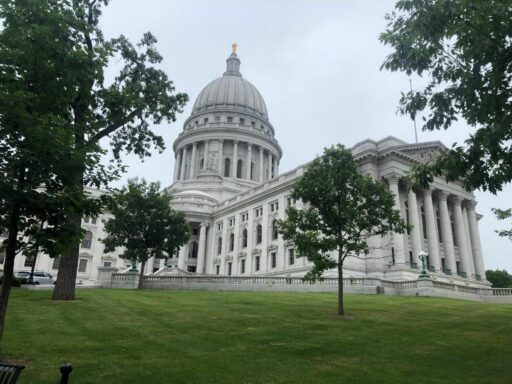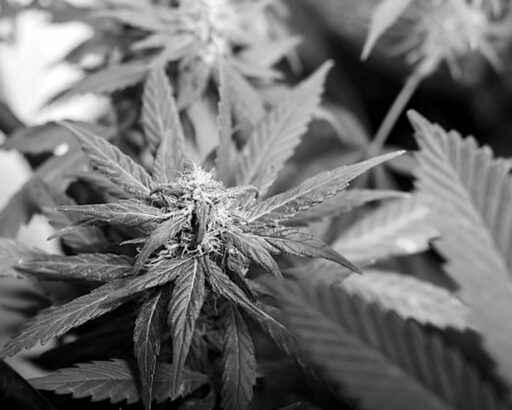The landscape of marijuana legalization in the United States has seen significant changes since 2018, with a patchwork of laws evolving across the country. This comprehensive guide provides a detailed look at the states where marijuana was legalized in 2018, the legislative journey leading up to these changes, and the broader implications for the economy, businesses, and individuals navigating the legal nuances of marijuana use, both medical and recreational.
Key Takeaways
- In 2018, Michigan and Vermont made landmark decisions to legalize marijuana, with Michigan’s Proposal 1 passing by a significant margin and Vermont becoming the first state to legalize through the legislative process.
- California’s resolution and Michigan’s HR 151 highlight the growing call for federal clarity on marijuana policies and the need for banking solutions for the cannabis industry.
- The economic and cultural landscape of marijuana has transformed, with states like Oregon leading the way in creating a vibrant cannabis culture that includes dispensaries, cannabis-friendly accommodations, and THC-infused culinary experiences.
- Despite legalization progress, there remain complexities in the legal status of CBD oil with THC, as legality varies by state and is subject to specific THC concentration limits.
- Educational resources, legal assistance, and advocacy groups are essential for individuals and businesses to navigate the evolving marijuana laws, including comprehensive guides to state-specific regulations and federal legislative developments.
Overview of Marijuana Legalization in the United States

Historical Context and Federal Stance
The journey toward marijuana legalization in the United States has been complex and fraught with contention. Under federal law, marijuana remains classified as a Schedule I illegal substance, indicating a high potential for abuse and no accepted medical use. Despite this, states have taken individual paths to address the legality of marijuana, leading to a patchwork of regulations across the country.
In 2018, efforts to reconcile state and federal laws gained momentum. States like Michigan and New Jersey actively called on Congress to reschedule marijuana or to recognize state authority on the matter. The National Conference of State Legislatures (NCSL) also advocated for state sovereignty in marijuana regulation, emphasizing the need for federal clarity.
The variance in state and federal laws creates a challenging landscape for consumers and businesses, who must navigate a complex web of regulations to ensure compliance.
The following table highlights key federal statutes and legislative actions related to marijuana:
| Year | Statute or Action | Relevance |
|---|---|---|
| 1937 | Marijuana Tax Act | First federal restriction of cannabis |
| 1961 | UN Single Convention Treaty | International agreement controlling cannabis |
| 1970 | Controlled Substances Act | Classified marijuana as Schedule I |
| 2018 | Farm Bill | Legalized hemp-derived products |
As the debate continues, the economic and cultural impacts of legalization become increasingly significant, influencing public opinion and legislative actions.
State-by-State Legalization Progress
The landscape of marijuana legalization across the United States has been rapidly evolving. In 2018, pivotal movements occurred in several states, marking significant progress in the journey towards widespread legalization.
In particular, Michigan made headlines by passing ‘Proposal 1’, which legalized, regulated, and taxed marijuana, with a decisive 56 percent of voters in favor. Vermont also took a historic step by becoming the first state to legalize marijuana through legislative action rather than a public vote.
The progress in each state reflects a patchwork of policies that continue to shape the national conversation around cannabis.
The table below summarizes key legislative actions taken in 2018:
| State | Action Taken |
|---|---|
| Michigan | Passed ‘Proposal 1’ to legalize marijuana |
| Vermont | Legalized marijuana through legislative action |
| New Hampshire | Established commission to study legalization |
| Rhode Island | Established commission to study legalization |
These developments are part of a broader trend that has seen a shift in public opinion and legislative approaches to marijuana policy.
The Economic and Cultural Impact of Legalization
The legalization of marijuana has ushered in significant economic and cultural shifts across the United States. States that have embraced legalization are witnessing a burgeoning cannabis industry, with a diverse range of products and services emerging to meet consumer demand. From THC-infused edibles to cannabis tourism, the market is rapidly expanding.
Economic benefits are also evident in the job market and state revenues. Legal cannabis has created jobs in cultivation, retail, and ancillary services, while also generating substantial tax income for states. This financial influx is often allocated to public services and infrastructure, further stimulating local economies.
Culturally, the stigma surrounding marijuana use is diminishing. The 1960s cultural climate shift towards more lenient attitudes has continued to evolve, with legalization further normalizing cannabis use in society. Educational efforts and record clearing initiatives are helping to mitigate the long-term impacts of past marijuana regulations on individuals’ lives.
The interplay between economic growth and cultural acceptance is reshaping the narrative around cannabis, highlighting its potential as a mainstream commodity.
The Legislative Journey to Legalization

Key Ballot Initiatives and Legislative Actions
The path to marijuana legalization has been paved by a series of key ballot initiatives and legislative actions. In 2018, several states made significant strides through various measures. For instance, study bills filed in states like Hawaii and Massachusetts led to the establishment of commissions to explore the legalization and regulation of cannabis.
While some states progressed, others faced challenges. Notably, in Washington, attempts to repeal voter-approved legal marijuana did not succeed. Moreover, South Dakota’s Amendment A, aimed at legalizing marijuana, was deemed unconstitutional in a 2021 ruling.
The legislative landscape for marijuana legalization is complex and ever-evolving, with states taking unique approaches to navigate federalism and public opinion.
The table below summarizes some of the legislative actions taken in 2018 and their outcomes:
| State | Action | Outcome |
|---|---|---|
| Washington | Repeal Efforts | Did Not Pass |
| South Dakota | Amendment A | Ruled Unconstitutional |
| New Hampshire | Study Bill | Enacted |
| Rhode Island | Study Bill | Enacted |
The Role of Public Opinion and Voter Referendums
Public opinion has played a pivotal role in shaping the landscape of marijuana legalization. Voter referendums have often been the catalyst for change, allowing citizens to voice their support or opposition directly. For instance, in 2018, Michigan voters passed Proposal 1, legalizing marijuana for adult use, with a significant majority.
The impact of these referendums is evident in the legislative actions that follow. In states where public opinion strongly favors legalization, lawmakers often feel compelled to align with their constituents’ wishes. Conversely, efforts to repeal voter-approved initiatives, such as those seen in Washington, have generally failed to gain traction.
The interplay between public sentiment and legislative outcomes underscores the importance of voter engagement in the democratic process.
Here is a brief overview of key voter referendums related to marijuana legalization in 2018:
- Michigan: Proposal 1 approved by 56% to legalize, regulate, and tax marijuana.
- Vermont: First state to legalize marijuana through the legislative process, not a ballot initiative.
- Illinois: General Assembly passed the Cannabis Regulation and Tax Act.
Federal Legislation and State Compliance
In the intricate dance between state and federal laws, understanding and compliance are key for those navigating the cannabis industry. The federal government’s stance, as outlined in the Controlled Substances Act, often conflicts with state initiatives to legalize marijuana, creating a complex legal environment.
The push for clarity and alignment between state and federal legislation has been a focal point for industry stakeholders. Efforts to reconcile these differences have led to a number of legislative actions and resolutions.
In 2018, states like Michigan and California took proactive steps by urging Congress to address the discrepancies in marijuana policies. This included resolutions and bills aimed at rescheduling marijuana and allowing financial services for cannabis businesses. The National Conference of State Legislatures (NCSL) has been instrumental in advocating for state sovereignty in marijuana regulation, sending letters to Congress in support of pertinent bills.
Legislation of Note in 2018:
- Marijuana Tax Act 1937
- Controlled Substances Act 1970
- 2018 Farm Bill
- Medical Marijuana and Cannabidiol Research Expansion Act
- SAFER Banking Bill
- Marijuana Opportunity Reinvestment, and Expungement (MORE) Act
Understanding the Legal Landscape in 2018

States That Legalized Marijuana in 2018
In 2018, the landscape of marijuana legalization saw significant changes. Michigan voters passed Proposal 1, making it the 10th state to legalize marijuana for recreational use. Vermont also made history by becoming the first state to legalize marijuana through the legislative process rather than a ballot initiative.
The year 2018 marked a pivotal moment in the movement towards marijuana legalization, with states taking varied legislative approaches to address the issue.
Here is a summary of the states that legalized marijuana in 2018:
- Michigan: Legalized recreational marijuana via voter approval of Proposal 1.
- Vermont: Legalized recreational marijuana through legislative action.
These developments reflect a growing trend towards acceptance and regulation of marijuana, with each state crafting its own set of rules and regulations.
Medical vs. Recreational Use Regulations
In 2018, the distinction between medical marijuana and recreational cannabis became increasingly significant across various states. Medical marijuana typically requires a prescription and is used to treat specific health conditions, while recreational use is for adult enjoyment without medical justification.
The regulations surrounding THC and its analogs, such as THCA, vary by state. Some states allow unrestricted access to THCA products, while others limit its legality based on the delta-9 THC content. This creates a complex landscape for consumers and businesses alike.
For instance, in states like Nevada and Massachusetts, both medical and recreational cannabis are legal, providing broad access to THCA. In contrast, Nebraska only permits hemp-derived products with less than 0.3% THC. The table below summarizes the legal status of cannabis and its derivatives in selected states:
| State | Medical | Recreational | THCA Legal Status |
|---|---|---|---|
| Minnesota | No | Yes | Unrestricted |
| Missouri | Yes | No | Farm Bill-compliant, available |
| Montana | Yes | Yes | Recently legalized, unrestricted |
| Nebraska | No | No | Hemp-derived <0.3% THC only |
| Nevada | Yes | Yes | Accessible |
Understanding these nuances is crucial for anyone navigating the cannabis industry or considering the use of cannabis products.
Legal Implications for CBD Oil with THC
The legal landscape for CBD oil containing THC is complex and varies significantly across the United States. The 2018 Farm Bill marked a pivotal moment by legalizing hemp-derived products, yet it explicitly preserved the FDA’s authority to regulate these substances under the FD&C Act. This federal framework provides a broad outline, but individual state laws introduce a patchwork of regulations that businesses and consumers must carefully navigate.
In some states, CBD oil with THC is considered illegal, while others have set specific limits on THC content. For instance, certain jurisdictions may permit CBD oil with a maximum of 0.5% THC. It’s crucial for stakeholders to consult state laws to ensure compliance, as the consequences of violating these regulations can be severe.
The distinction between federal and state law creates a dynamic legal environment where the status of CBD oil with THC can shift, demanding constant vigilance from those involved in the industry.
Understanding the nuances of these regulations is essential for anyone looking to participate in the cannabis market, whether as a consumer, business owner, or healthcare provider.
Financial and Business Implications of Legalization

Banking Challenges for the Cannabis Industry
Despite the growing acceptance of cannabis, financial institutions remain hesitant to service the industry due to federal regulations. This reluctance stems from the clash between state laws that have legalized marijuana and federal laws that still classify it as an illegal substance.
- Risk of federal prosecution for banks that provide services to cannabis-related businesses.
- Lack of access to banking services forces many cannabis businesses to operate on a cash-only basis.
- Difficulty in obtaining loans or credit lines for business expansion or operations.
- Challenges in managing large amounts of cash, which can lead to security risks and logistical issues.
The cannabis industry’s growth is hampered by these banking challenges, which also contribute to operational inefficiencies and increased risks. Without a resolution, the industry’s potential is significantly limited.
Taxation and Economic Benefits
The legalization of marijuana has introduced a new source of revenue for states through taxation. Cannabis tax revenue is a critical aspect of the nationwide cannabis tax policy blueprint, suggesting that tax rates should be competitive to support legal market growth over illicit markets.
The Internal Revenue Code Section 280e presents a significant challenge for cannabis operators by limiting the deductions they can claim, thereby increasing their tax burden. This section of the tax code has been a point of contention, as it can stifle the financial growth of legal cannabis businesses.
The economic benefits of marijuana legalization extend beyond tax revenue. They include job creation, increased investment opportunities, and a boost to related sectors such as tourism and retail.
States have adopted various approaches to cannabis taxation, with some opting for percentage-based taxes while others have implemented fixed fees per weight or potency. The table below provides a snapshot of the tax structures in different states:
| State | Tax Type | Rate |
|---|---|---|
| State A | Percentage | 15% |
| State B | Fixed Fee | $2.50/g |
| State C | Potency-Based | $0.10/mg THC |
It’s essential for states to balance taxation to ensure the sustainability of the cannabis industry while also maximizing the economic benefits for the state and its residents.
Emerging Markets and Investment Opportunities
The legalization of marijuana has opened up a plethora of investment opportunities across various sectors. Not only are traditional cannabis businesses such as dispensaries and cultivators thriving, but ancillary companies are also gaining traction. These include firms specializing in lighting, hydroponics, and security for cannabis operations.
Investors are particularly interested in the potential of markets in North America, Europe, and Asia, where regulatory changes are creating fertile ground for cannabis-related enterprises. The following table highlights key regions and sectors that are attracting investment:
| Region | Sectors Attracting Investment |
|---|---|
| North America | Cultivation, Retail, Biotech |
| Europe | Pharmaceuticals, Hemp |
| Asia | Research, Agro-technology |
As the industry matures, the focus is also shifting towards technology-driven solutions such as augmented and virtual reality for marketing and education, as well as advanced analytics for market research and consumer behavior tracking.
The intersection of technology and cannabis is creating new avenues for growth, with investors keen to capitalize on innovative products and services that cater to a more sophisticated consumer base.
Navigating the Legal Nuances and Resources

Comprehensive Guide to Medical Cannabis Laws
Navigating the complex landscape of medical cannabis laws requires a clear understanding of the regulations that vary from state to state. Each state’s medical cannabis program has unique qualifications, application processes, and regulations.
For instance, in Utah, medical cannabis cards are issued to patients 18 and over, with a validity of six months post-issuance and upon renewal. Minors and young adults between 18 to 20 years require additional approval. It’s imperative to stay informed and source from reputable vendors to ensure compliance with evolving laws.
As the cannabis industry grows, participants must remain vigilant in adhering to both federal and state legislation to maintain legal operations.
Here’s a brief overview of some key aspects to consider when understanding medical cannabis laws:
- Qualification criteria for obtaining a medical cannabis card
- Application and renewal processes
- State-specific regulations and restrictions
- Importance of sourcing from trusted vendors
- Keeping abreast of legislative changes
Educational Resources and Attendee Materials
In the evolving landscape of marijuana legalization, staying informed is crucial. Educational resources are key for those looking to navigate the complexities of cannabis laws. Attendees of seminars and conferences can expect to receive a wealth of materials, including speaker presentation materials and links to the full text of referenced bills and laws.
Who should consider attending these educational events? The target audience ranges from new legal and regulatory professionals to practitioners with a focus on cannabis laws. It’s an opportunity to deepen understanding and ensure compliance with the latest regulations.
Registration for these events varies, with different pricing tiers for members, non-members, and specific industry or government representatives. Below is a breakdown of the registration fees:
| Category | Members Price | Non-Members Price |
|---|---|---|
| Firms/Industry | $599 | $699 |
| Government & Assoc. | $499 | $599 |
| Public/Patient Org & Academic | $499 | $599 |
The importance of these resources cannot be overstated. They serve as a bridge between legal theory and practical application, empowering attendees to make informed decisions and take actionable steps in their professional roles.
Legal Assistance and Advocacy Groups
Navigating the complex landscape of marijuana legalization requires not only understanding the laws but also knowing where to find legal assistance and connect with advocacy groups. Organizations like NORML have been at the forefront of reform efforts, providing support and representation for individuals affected by marijuana prohibition.
For those seeking legal guidance or wanting to contribute to the reform movement, here’s a list of resources:
- NORML – Working to Reform Marijuana Laws Since 1970
- National Cannabis Industry Association (NCIA)
- Marijuana Policy Project (MPP)
- Americans for Safe Access (ASA)
- Drug Policy Alliance (DPA)
It is essential for individuals and businesses to stay informed and actively engage with these groups to navigate the evolving legal landscape effectively.
Each organization offers unique services, from legal representation to policy advocacy, and can be a valuable ally in understanding and influencing marijuana laws.
Conclusion
As we’ve explored throughout this comprehensive guide, the landscape of marijuana legalization in the United States has undergone significant changes since 2018. States like Michigan, Vermont, and Illinois have made progressive strides in legalizing and regulating cannabis, reflecting a broader shift in public perception and state legislation. The push for clarity at the federal level, particularly regarding the Controlled Substances Act and financial services for the cannabis industry, underscores the ongoing tension between state and federal policies. Despite the complexity of laws and the varying degrees of legalization across states, one thing is clear: the movement towards legalization is gaining momentum, with cultural and economic transformations evident in states that have embraced cannabis reform. As we continue to witness the evolution of marijuana laws, it is crucial for individuals and businesses to stay informed and compliant with their respective state regulations.
Frequently Asked Questions
Which states legalized marijuana in 2018?
In 2018, Michigan voters approved Proposal 1 to legalize, regulate, and tax marijuana. Additionally, Vermont became the first state to legalize marijuana for adult use through the legislative process with its law going into effect on July 1, 2018.
What is the federal stance on marijuana as of 2018?
As of 2018, marijuana remained illegal under the Federal Controlled Substances Act, though several states passed resolutions and bills urging Congress to clarify its position and allow financial institutions to serve the cannabis industry.
Can CBD oil contain THC and still be legal?
Legality of CBD oil with THC varies by state. Some states allow CBD oil with certain THC levels, while others consider it illegal. It’s important to consult state laws for specific regulations.
How has public opinion influenced marijuana legalization?
Public opinion has played a significant role in marijuana legalization, with voter referendums and ballot initiatives reflecting growing support for legal cannabis, leading to legislative changes in various states.
What are the banking challenges faced by the cannabis industry?
Due to federal regulations, many financial institutions are hesitant to offer services to cannabis businesses, creating challenges in banking, financing, and conducting transactions for the industry.
Is marijuana legal for medical use in Utah as of 2018?
Yes, in November 2018, Utah voters approved Ballot Proposition 2 legalizing medical cannabis, followed by the passage of HB 3001, which established regulations for medical marijuana in the state.





